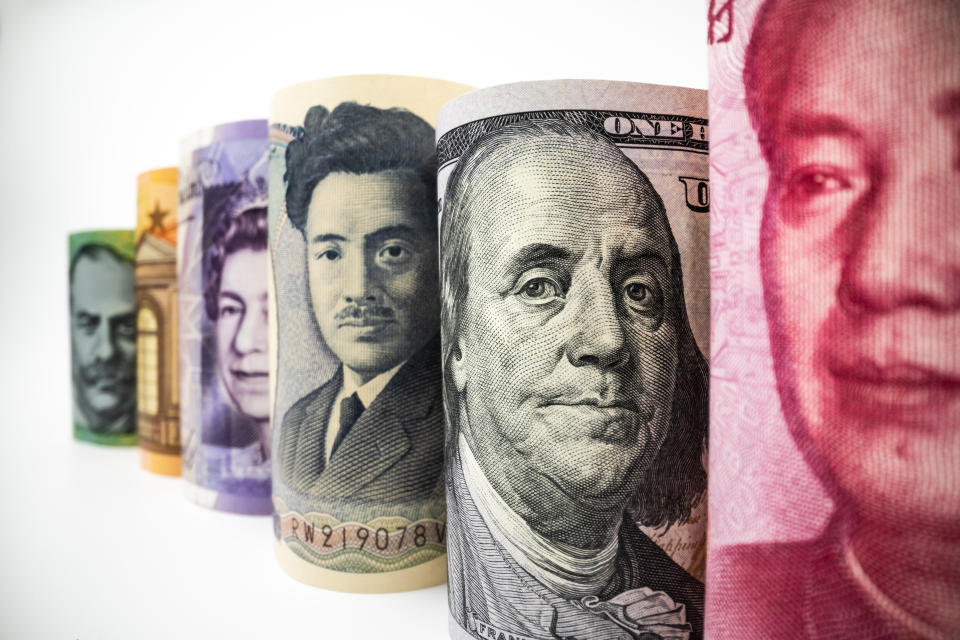‘Really concerning’: Billionaire investor warns historical trend repeating

The global coronavirus recession was unprecedented in its speed and scale, but billionaire investor Ray Dalio said history provides insight into where the economy is heading next.
Speaking at the Yahoo Finance All Markets Summit in America, the Bridgewater Associates founder said there is a confluence of factors that makes this financial crisis an echo of others that trace back thousands of years through history.
Dalio said the factors are long-term high levels of debt and low interest rates, large wealth gaps and political polarisation and the rise of an external power. The investor explored the relationship between these factors in his new book The Changing World Order.
“I wanted to study the rises and declines of reserve currency empires, so I needed to go back far enough that I would have a few. So I had to go back 500 years so I could see the rise and decline of the Dutch empire and its reserve currency, the rise and decline of the British empire and its reserve currency, the rise and beginning of decline for the United States and its reserve currency, and China,” Dalio said.
Continuing, he said America’s current situation is the most similar to what happened during the 1930s - 1945 period.
“It is really concerning. And it's even more concerning when I went back to find the 500 years, and the times that repeated over and over again. And what I found was, there's a cycle. There's a big cycle,” he said.
“You start a new world order.”
Ray Dalio’s new world order cycle
The second world war ended in 1945, after which the world entered a new order, Dalio said, explaining that the US dollar became the world’s reserve currency and the world was divided differently.
As in this particular cycle, there’s a period of peace and prosperity after the conflict, which then gets extrapolated leading to more debt and fewer inhibitions.
Then, if a country is holding the reserve currency, the opportunities to borrow increase leading the country further into debt.
“So you have those debt increases and you have bubbles, but you have prosperity. And bubbles are really fun - they're really enjoyable. They're great. But then you get to the point that there is a limitation to that,” Dalio said.
“Those limitations start to become apparent when the central bank can't easily produce money and credit. That starts when you hit zero interest rates. Because then you can't do it the same.”
Central banks then look to monetary policy to keep the economy going, but as interest rates have lost their power, it’s time to consider printing money and purchasing financial assets.
The problem, Dalio said, is that the purchase of financial assets has a side effect: it worsens the wealth gap.
“Those who have financial assets do better than those who don't have financial assets. And you have a wider and wider wealth gap, and when you have that wider wealth gap and then you have another downturn in an economy, that's a formula for a lot of conflict,” he said.
The central bank is faced with an even more complex question: it can’t tax without taking money out of the economy, and it’s also struggling to cut expenses.
The logical progression is one that can be seen “thousands of years” back in history - the central bank prints money
“Think of it. We got all those checks in the mail, and we needed to get all those checks in the mail. But you can't take it away from anybody. So where does it come from, and what are the implications?”
All this, and an external competitor
Dalio said this cycle often coincides with a growing external competitor. In this case, that competitor is China.
“[It] is a challenge in that environment. So yes, it's one of those times. And I think people are not aware of it,” he said.
“I learned from my experiences that many things that happened in my lifetime that surprised me never happened in my lifetime before. But they happened many times before, and in history. And that if I would go back in history, I could see that.”
The investor said the world will likely see the Chinese renminbi rise in importance, although there’s still a long way to go before it’s a reserve currency.
“More and more, you're going to see the internationalization of the renminbi. You're going to see capital flows move in those directions. And those kind of analogous movements have repeated through history.”
Make your money work with Yahoo Finance’s daily newsletter. Sign up here and stay on top of the latest money, news and tech news.
Follow Yahoo Finance Australia on Facebook, Twitter, Instagram and LinkedIn.

 Yahoo Finance
Yahoo Finance 
